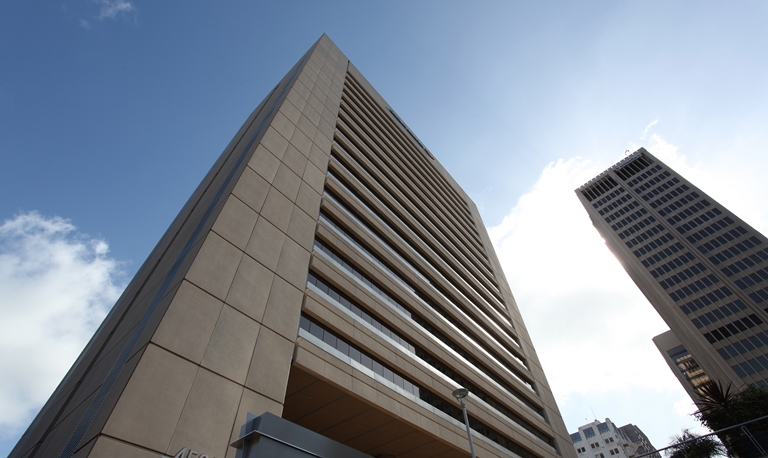Daily Business Report-June 30, 2015
The office tower at 450 B St. in Downtown San Diego.
San Diego’s Skyline Office
Rental Rates Continue to Rise
There’s no space like Skyline space. The premier office towers that make up San Diego’s skyline boast — by far — the most expensive office space to rent Downtown, garnering 10.1 percent more than non-Skyline space, according to JLL’s Skyline Review.
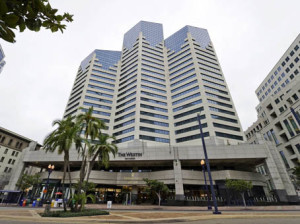
Average Skyline rates in the first quarter of 2015 were $29.66 per square foot compared to $26.94 per square foot in non-Skyline buildings Downtown. This gap between Skyline and non-Skyline space represents a notable shift from historical spreads: 10 years ago, the difference was just 6.1 percent.
“The flight to quality in earlier recovery years coupled with an improving economy today have led to significant supply constraints in the county’s highest-quality office buildings, and the rent gap has widened significantly,” said Bess Wakeman, executive vice president at JLL in San Diego.
Unlike many cities, however, some San Diego suburban sub markets continue to command higher office lease rates than Downtown, including Carlsbad, Del Mar Heights, Rancho Bernardo, Sorrento Mesa, Torrey Pines, UTC and Mission Valley. As compared to just San Diego’s Downtown skyline buildings, however, only Del Mar Heights, Sorrento Mesa, Torrey Pines, and UTC still command higher lease rates.
Nearly three-quarters (75 percent) of the new development nationwide is concentrated in only nine cities, which means most tenants will have little negotiating leverage in their office agreements for the time being, including those in San Diego. Downtown San Diego does, however, have several major office construction projects pending, and if lease rates continue to climb, those developers will be able to justify new construction costs.
If office rental rates are fierce, the price tag to buy an office building is even more so. Economic growth, business expansion and improving market fundamentals have resulted in year-over-year pricing gains of plus-10 percent, pushing San Diego’s Skyline buildings closer to peak prices.
The sheer volume of foreign capital chasing Skyline office deals is having a major impact on pricing. Of the $35.3 billion transacted over the past five quarters across the U.S., 34.6 percent was driven by international buyers. In Houston and Seattle, every office deal transacted during this time period had a foreign buyer, while in Washington, D.C., Boston and New York, offshore capital led more than 50 percent of office purchases. During 2014, four international buyers entered the San Diego market – one from Turkey, two from Canada and one from Mexico – but the acquisitions were made countywide and not in the skyline.
Read more of the San Diego report here.
Read the full Skyline report here.
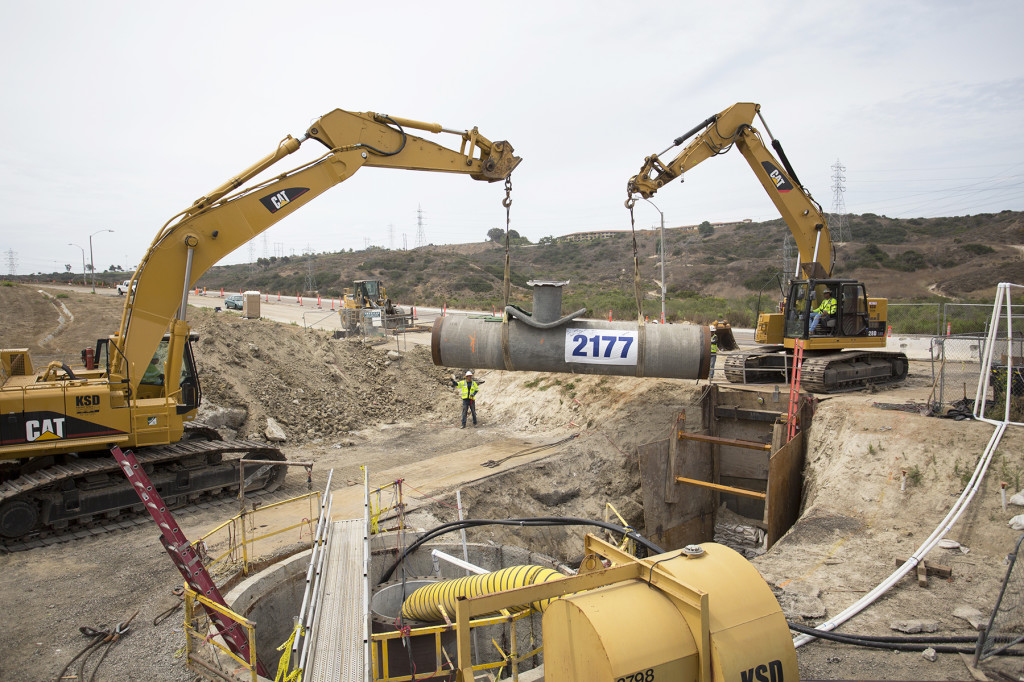
Crews Complete Pipeline Installation
For Carlsbad Desalination Plant
Carlsbad — After more than two years of work, Carlsbad Desalination Project crews installed the final segment of the 10-mile conveyance pipeline that connects the Carlsbad Desalination Plant to the San Diego County Water Authority’s regional water distribution system. Construction crews lowered the final piece of pipe — No. 2177 — into Macario Canyon in Carlsbad Monday morning, completing a major element of the historic project.
The $1 billion Carlsbad Desalination Project is the result of a 30-year Water Purchase Agreement between the San Diego County Water Authority and Poseidon Water for the purchase of between 48,000 and 56,000 acre-feet per year of desalinated seawater. It includes three main components: the desalination plant, the pipeline, and about $80 million in upgrades to Water Authority facilities for distributing the desalinated water throughout the region. Overall, the project is more than 90 percent complete.
The reverse-osmosis plant is on budget and on schedule to start commercial water production this fall, following approvals from state regulators. It will produce enough water to serve about 112,000 families and meet 7 to 10 percent of the region’s water demand.
“This final piece of pipe is a significant milestone for the Carlsbad Desalination Project, and a sign that the entire construction project is entering its final phase,” said Peter MacLaggan, vice president of Poseidon Water, the project’s private developer. “We are grateful for the cooperation and support of the businesses, residents, property owners and city staff along the route in Carlsbad, Vista and San Marcos.”
County Names New Deputy
Public Health Officer

Sayone Thihalolipavan, a former health officer in New York City, has been named the new deputy public health officer for the county of San Diego. He takes over for Eric McDonald, who is now the medical director of the Health and Human Services Agency’s epidemiology and immunization branch.
Thihalolipavan, 33, served as medical director of the Clinical and Scientific Unit in the Bureau of Chronic Disease and Tobacco Control of the New York Department of Health and Mental Hygiene. He worked on tobacco control, diabetes prevention, alcohol and drug use, vital statistics, lead poisoning, Ebola, and other emergency response efforts.
During the Ebola scare, Thihalolipavan was involved in the planning and implementation of quarantine-related efforts, initiating a call center to monitor people coming from Ebola-affected countries, and serving as the Ebola doctor on call to deal with clinical inquiries that arose during non-business hours.
Born in Nigeria to Sri Lankan parents, Thihalolipavan was raised mostly in Toronto and Buffalo, N.Y. He has a wife and 4-year-old daughter.
Airport Development Plan
Overview Set for July 14
An overview of the Airport Development plan, the next master planning phase for San Diego International Airport, will be presented Tuesday, July 14, at the former Commuter Terminal at the airport. The program will be presented at 4 p.m. and at 6 p.m. in the Orville and Wilbur Wright Conference Rooms.
The overview will be presented by Keith Wilschetz, director of airport planning and noise for the San Diego County Regional Airport Authority.
The Airport Authority is seeking input from residents and airport stakeholders on the alternatives to the plan. It is expected that the entire ADP planning and environmental process will conclude in 2017.

Hotel Churchill Sign to be Removed, Refurbished
The 1940s-era sign that has stood atop the historic Hotel Churchill at 827 C St. in Downtown San Diego will be removed to be refurbished as part of the ongoing rehabilitation of the building.
A new metal frame will be built around the sign, which is approximately 32 feet wide and 10 feet high and weighs just under 2,000 pounds. New wiring and neon lights will replace the old, and the sign will be repainted.
After it has been restored, the sign will be returned to the Hotel Churchill’s rooftop near the completion of the building’s rehabilitation, which is expected in 2016.
The San Diego Housing Commission and its nonprofit affiliate, Housing Development Partners, are collaborating to renovate Hotel Churchill to create 72 affordable studios for homeless individuals.
The $20.5 million rehabilitation project will set aside 56 units for veterans, eight units for youth aging out of the foster care system and eight units for adults who will also need supportive services. Construction began in May 2015.
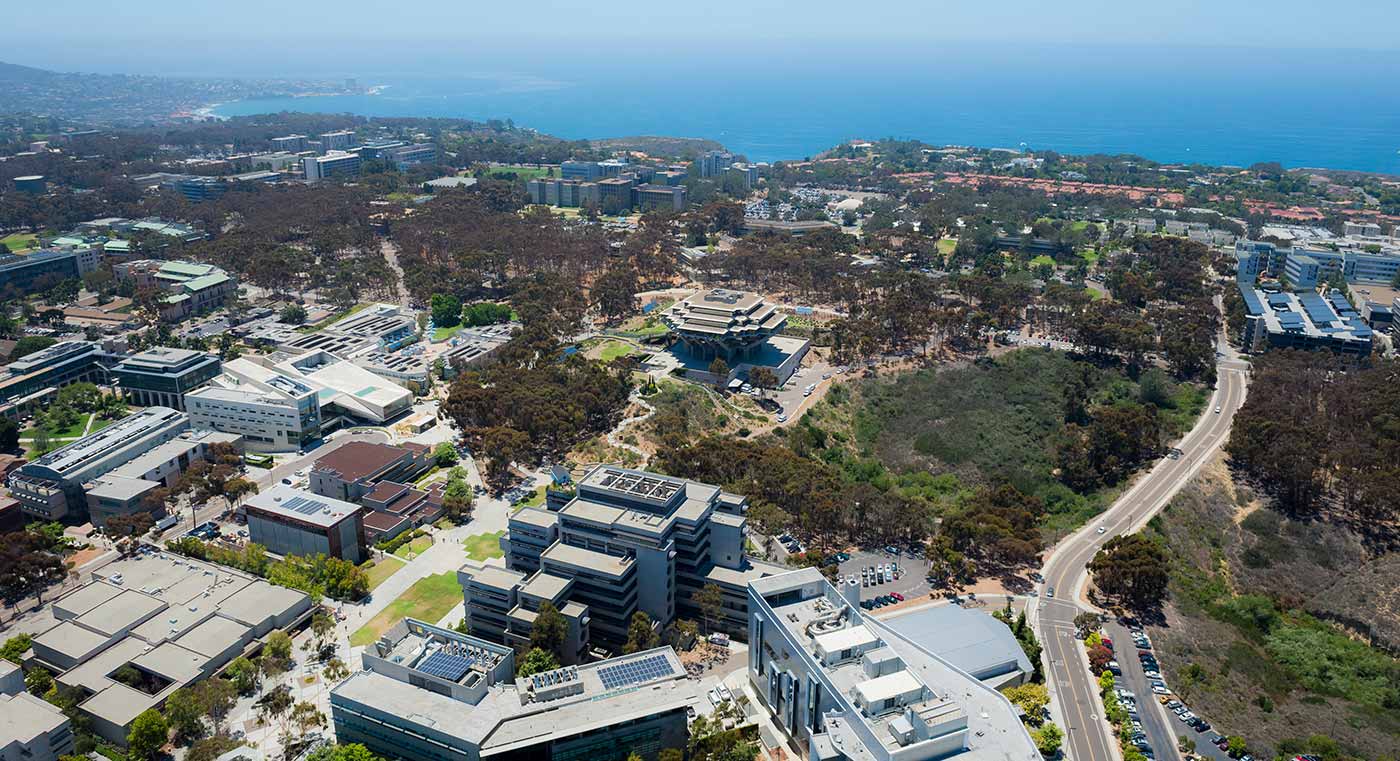
UC San Diego Launches Aggressive Drive
To Push Innovation Across the Campus

UC San Diego’s Office of Research Affairs has launched an aggressive push to boost innovation across all areas of campus and to speed university discoveries and technology to the nation’s marketplaces.
The recently implemented Frontiers of Innovation programs, for example, help fund new campus centers for research as well as help support promising undergraduate, graduate and underrepresented students; and the office actively encourages faculty groups to establish new organized research units (ORUs) focused on the university’s strategic research areas.
One part of that drive is the recent hire of Paul Roben as associate vice chancellor for innovation and technology commercialization. Roben served as a key member of Ireland’s Innovation Taskforce (since 2009) and co-authored a national economic development plan for Ireland, among other achievements.
According to Sandra Brown, vice chancellor for research, Roben will “transform the functions provided by the Technology Transfer Office, the Industry Research Alliances and Industry Contracting offices into an integrated organization. The new IACT division will also provide an integrated platform to promote a strategic and multidisciplinary approach to commercializing technologies – including the creation of start-ups here at UC San Diego.”
He came to campus from nearby Salk Institute, where he served as senior director of office technology development, and worked with multiple academic institutes to develop strategic processes and drive innovation alliances.
Council OKs Brownout at City Parks
To Meet State Water Mandate
San Diegans might see less green around city parks and other facilities in the coming months, in light of new water-use policies passed unanimously Monday by the City Council.
The council action includes tighter restrictions on water use by the public, and adoption of a new program to reduce the amount of water being used by the Parks and Recreation Department — which accounts for 60 percent of city water consumption.
While actively used sections of city parks will still be watered three times a week, lesser-used parts will be cut back to twice a week. Areas where the landscaping is merely ornamental won’t be watered anymore, which will lead to areas turning brown or yellow, Parks and Recreation Director Herman Parker said.
“They’re turf areas that might be in front of community centers or adjacent to the sidewalk or curb areas,” Parker said.
“You’ll see areas of yellowing that might be around play structures or around picnic areas that are not heavily used,” he said. “Our active areas where we have active ball-playing — soccer fields, baseball fields — and in some of our high tourist traffic areas, some of our historic resources, we want to do all we can to preserve those areas and keep them looking pretty good.”
The new regulations were prompted by an order by state officials for San Diego to reduce consumption by 16 percent, compared to 2013.
For the public, the amendments include limiting outdoor watering in San Diego to two days a week for no more than five minutes per station and prohibiting irrigation within 48 hours of measurable rain.
The provisions also allow the city to assign watering days and times, clarify language on the washing of pavement and define different types of fountains.
“It’s the situation we’re in — we just have to deal with it,” Councilman Scott Sherman said.
The city has been imposing restrictions on water use since last year, but its regulations don’t include all the orders by the state or San Diego County Water Authority.
Regulations already in place in the city set allowable times for people to water their lawns and vehicles, require leaks to be fixed within 72 hours, and specify that hoses only be used with shut-off nozzles and that fountains be turned off.
Councilman David Alvarez said if the restrictions don’t help reduce consumption in San Diego by 16 percent, the city will have to consider even tighter regulations. He also said he wanted to explore incentives, like rate relief to reward customers who conserve, and rebates other than those offered for replacing lawns with drought-tolerant landscaping.
— City News Service
Personnel Announcements
Christina Semmer Joins Wilson Turner Kosmo
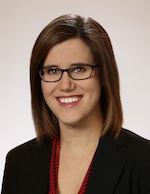
Christina Semmer has joined Wilson Turner Kosmo LLP as an associate. Semmer joins the firm’s employment and business practice groups. Her business litigation practice includes representing companies in breach of contract, business tort, and other complex litigation matters. Her employment law practice includes representing employers in a variety of employment disputes.
Before joining the firm, Semmer was a judicial law clerk to the Honorable Nita L. Stormes of the United States District Court for the Southern District of California. Before that, Semmer worked as an associate for Faegre Baker Daniels LLP in Minneapolis, representing clients in complex litigation matters.
Semmer received her J.D. from the University of Missouri School of Law and her B.A., cum laude, from Macalester College.

